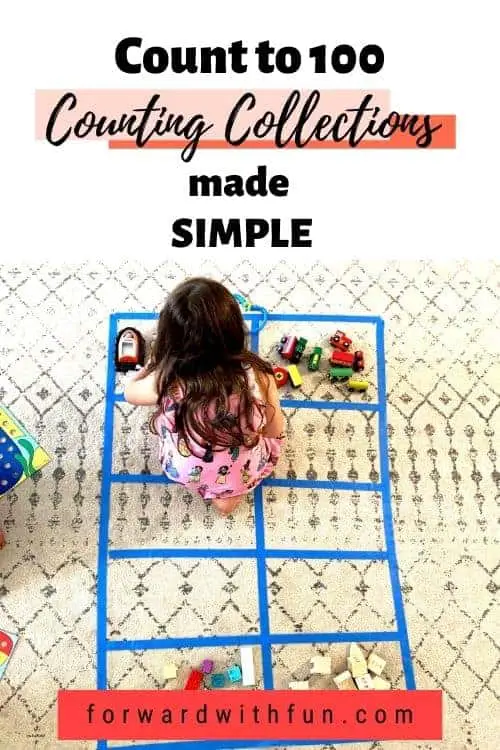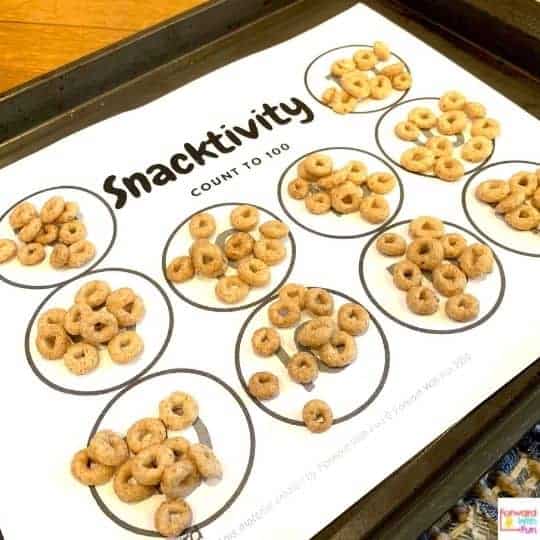
For the 100th day of our Covid-19 quarantine kindergarten, my kids and I created counting collections of 100 items.
As part of kindergarten standard K.CC.A.1 in the US kids must count to 100 by ones and tens. The 100th day of school is the perfect time to practice counting to 100 and to create student led counting collections that expand kids number sense and challenge them to count higher than they have before!
When kids understand the number 100 to be ten groups of 10, they're really building their comprehension of our base ten number system and beginning to learn about place value.

A counting collection is any number of objects that you count out and put together. It can be a collection of a specific kind of object, or it can be different sets of objects.
You can start with a number in mind, like we did with counting to 100, or you can work towards discovering how many of an object you have.
In order to be successful completing a counting collection, kids will have to keep track of what they counted and count orally with one to one correspondence.
Kids of any age can participate in counting collections, as there is no specific end number. Create a collection of 20, 50, 100, or more!
One hundred is a BIG number so for a counting collection to work, children must have a way of keeping track of what they have counted. This could be through providing a pen and paper or creating a system to separated counted from uncounted objects.
Though kids usually come up with their own systems, we used a ten frame because it was my oldest child's first time counting to 100, and a ten frame is a great way to show ten groups of 10! It's also an easy way to check your work without having to start all the way at the beginning.


Counting collections are more than just counting orally as high as you can. Rather they are opportunities to develop number sense- the understanding of how numbers relate to one another.
For example, Big Sis sometimes put more than 10 objects in the ten frame. I would point it out and she would have to count backwards or sometimes remove objects and recount the whole group. When should couldn't find enough of a certain object, we would ask ourselves, "Hmmm, how many more do we need to get to ten in that box?"
Not only was she counting, she was relating numbers to one another, problem solving, and doing addition and subtraction.
Also, not much time is spent in younger years counting to large numbers. Spending time counting to higher numbers helps kids to conceptualize what quantities look like. So often, those large numbers seem unfathomable to children. 100 seems like such a HUMONGOUS number to preschoolers and kindergartners, but doing a counting collection in a ten frame breaks it down into smaller groups.